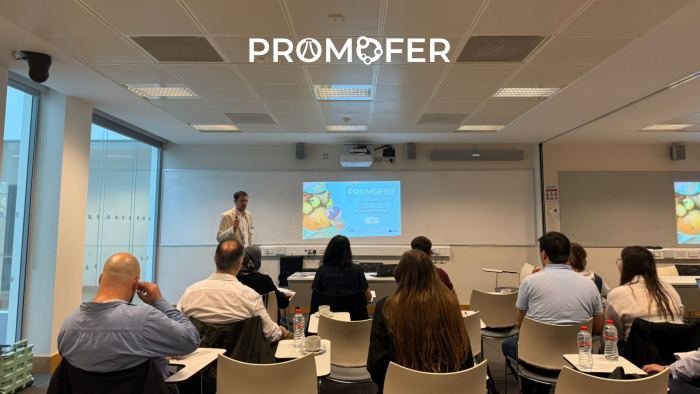PROMOFER project focuses on different strategies to overcome key industrial bottlenecks in the fermentation processes of two high-value bio-based compounds: PHBV and 2,3-BDO.
Funded by the European Union’s CBE-JU, the project valorises a wide range of agri-food and lignocellulosic residues—including low-value starches, whey permeate, industrial wastewater, rice straw, wheat straw, and pruning waste.

Image Credit: AIMPLAS
In the face of growing environmental concerns and the urgent need to reduce dependence on fossil resources, the development of circular and bio-based solutions is becoming increasingly important. One of the most promising approaches is the transformation of agricultural and food industry residues into high-value bio-based materials, such as biodegradable plastics and sustainable components for industrial applications. These innovations not only help reduce waste and greenhouse gas emissions, but also support the transition toward a more resilient and resource-efficient European economy.
In this context, the PROMOFER project, coordinated by AIMPLAS, the Plastics Technology Centre, and funded by the European Union’s CBE-JU, aims to unlock the potential of agri-food and lignocellulosic residues by converting them into two high-value bio-based compounds: PHBV, a biodegradable plastic, and 2,3-BDO, a key ingredient in the production of sustainable polyurethanes.
PROMOFER project focuses on different strategies to overcome key industrial bottlenecks in the fermentation processes of these two high-value bio-based compounds. After its first year of activity, the project consortium met on June 17 at University College Dublin to review progress across the different work packages. Key achievements include promising results in enzymatic hydrolysis, near-completion of microorganism characterization, and the first outcomes in the production of volatile fatty acids (VFAs). Work is also advancing on scaling up the fermentation processes and designing the production systems for PHBV and 2,3-BDO.
The second cycle of collecting agri-industrial waste is being organized, analysis of collected (agri and food) wastes has already been carried out. The project valorizes a wide range of agri-food and lignocellulosic residues—including low-value starches, whey permeate, industrial wastewater, rice straw, wheat straw, and pruning waste.
Finally, analysing and supporting the social acceptance of circular bio-based products has been launched, whilst the project is being disseminated amongst stakeholders with the goal to achieve engagement and knowledge sharing.
The ambition of PROMOFER project is linked to the use of specific biobased wastes from different industries, generated in significant amounts in Europe and showing specific overcomes to be valorized into high-added value products and to improve fermentative processes to produce bioplastics (PHBV and PU), whose yield are often inefficient to compete with chemical synthesis processes.
On the one hand, agro-industrial wastes (low value starches, whey permeate, industrial wastewater) will be used to produce PHBV a biodegradable and biobased bioplastic. On the other hand, lignocellulosic biomass (rice straw, wheat straw and prune waste) will be used to produce 2,3-BDO a chain extender in thermoplastic polyurethanes.
PROMOFER will contribute to significant knowledge advancements of the state-of-the-art in biobased waste treatments, improvements of strain capacities, uses of biocatalysts, process designs and downstream processes.
PROMOFER is coordinated by AIMPLAS, and the Consortium counts 13 partners from 7 European Countries. The project will run for 48 months, until June 2028.